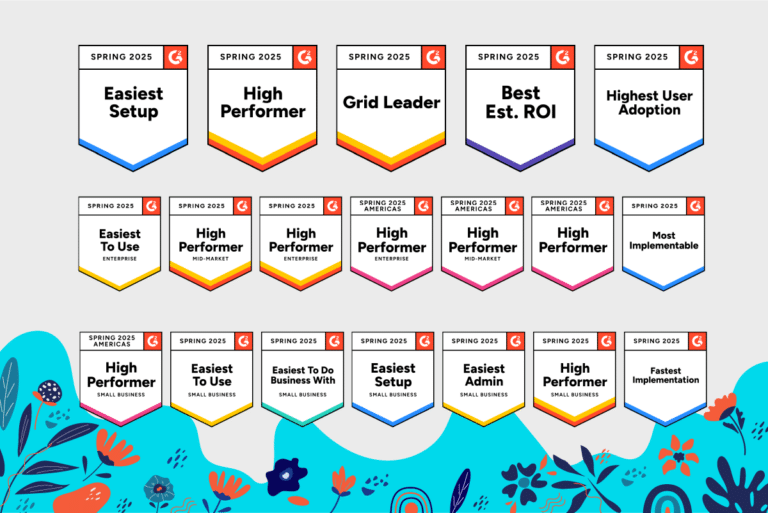US-based companies forfeited $25.9 billion to fulfill warranty claims in 2019. That may sound like an astronomical number, but according to Warranty Week, the share of sales going towards claims payments has been declining for years. We believe that much of this decline is due to advances in quality control (QC) —namely, digital data collection that provides smarter, faster results from the front lines of production.
The warranty expense rate (the percentage of product revenue reserved for warranty claims) has averaged 1.5% since 2013. Here’s the quick math: if your annual product revenue totals $100 million, and you’re provisioning the average for warranty claims, you’re handing out $1.5 million each year on warranties. It may not be a crippling amount, but it adds up over time. If you could save just a fraction of that expense, you could easily fund any number of projects and solutions.
One and a half percent of total product revenue is significant when you consider that even a single point of lost profit can make the difference between a confident and a skittish investor. It’s all the more worrisome when your warranty costs exceed the average, multiplying losses (and shareholder uncertainty). In the case of private companies, that 1.5% can make a huge impact on your sustained growth.
And, despite the numbers declining thanks to more and better QC processes, there are still shortcomings when it comes to accuracy and execution—like handling your QC inspections on paper. While it may be easy enough to write it off as the “cost of doing business,” there is a better way.
Getting actionable QC inspection results faster can save time, money, and a lot of headaches. It all starts with digital tools for collecting, sharing, and analyzing data.
Collecting actionable data is essential to maintaining an effective QC process, but many companies grapple with turning inspection reports into viable next steps. If you’re like most customer-facing organizations, mountains of your QC data lives in an isolated legacy system where it struggles to drive meaningful decisions.
Paper inspection results may also battle for real estate in a filing cabinet, or they may lie dormant on the final tab of an endlessly expanding spreadsheet. Antiquated legacy systems, paper, and spreadsheets force your data into a vacuum, condemning the data they hold to be filed and forgotten within the year.
If that data were made actionable with intelligent analysis tools, smart workflows, and easier accessibility, it could dramatically reduce the cost of warranty claims. You need the appropriate tools to transform that burgeoning spreadsheet and overstuffed filing cabinet into kindling for better quality control. Quality inspection software is crucial to slicing through the real-world latency of going from the first report to the final follow-up.
With the right tools at your QC team’s disposal, they can quickly act on more accurate and responsive inspections and analytics, which ultimately reduces the number of products returned for warranty claims—and saves your company’s budget in the process. Below, we’ve outlined four fast tips for getting the most out of quality control inspection software.
1. Rapidly initiate QC holds
When inspections uncover a serious defect anywhere from the production line all the way to packaging, it’s crucial to initiate a QC hold as soon as possible. Remove the product from circulation, carefully denote its disposition, and ensure the next logical steps are assigned appropriately. Does this issue require a root cause analysis? Is the problem with this specific product fixable?
Workflows make this process much smoother and faster. By connecting QC forms with task assignment and escalation paths, you eliminate a lot of legwork. When a supervisor or responsible employee encounters information about the QC hold, they’ll know all the details and its history without having to go searching. If you use mobile inspection software, QC teams can make more efficient and earlier decisions about holds, giving them more time to organize their response.
Rather than handing off data manually via emails, paper forms, and phone calls, your team can handle issues based on action plans that automatically kick off based on real-time triggers. Up-to-the-minute communication means that QC holds result in fewer faulty products entering circulation, and each issue can be corrected much sooner.
2. Optimize your QC inspection process
If you’ve ever performed a QC inspection, you know that it can take quite a lot of time to fill in basic information, such as the location, product ID, machine serial number, and so on. The average inspector must jot this info down over and over again. Boilerplate QC forms are crippled by inflexible templates dripping with irrelevant fields, which only weigh down the inspection process.
Each question that must be read, considered, and ultimately skipped is the QC inspection equivalent of a speed bump. Each time the inspector has to write down their name, date, and location, it adds more unnecessary time to the inspection. Mobile QC inspection software is able to autofill product information using offline data models, and irrelevant fields are automatically removed based on internal logic. The ultimate result is faster, more accurate inspection results.
A mobile QC inspection solution will not only keep delays at bay, but it will also allow the inspector to consult with relevant reference data, often with images: where should they look for the most common defects? What does a passing product look like? Inspectors won’t waste time entering redundant information, and they won’t make mistakes comparing quality standards with their observations.
3. Integrate your data and put it to work
Paper forms, legacy software, and spreadsheets all have one thing in common: they lack integration capabilities. If your team is desperately trying to reconcile and aggregate data gathered by inspectors on a dozen different systems, it’s time to start thinking about integration. The only way to maintain “one version of the truth” is by connecting all your systems with data simultaneously. A mobile solution’s flexible integration layer can do that for you.
A leading quality inspection solution will automate the manual work of combining all your data. No more data double-entry from paper forms into a database. No more emails about spreadsheet versions. With a robust API powering your custom integration layer, you could bring all your disparate systems together, sending data to the right place the moment a worker collects it. Not only can you save yourself a major headache, but you’ll also reduce the time it takes to find, fix, and prevent issues—meaning fewer miscues and warranty claims. Further integration with your own analysis tools or built-in dashboards will give you increased oversight over and insight into product quality, keeping you abreast of trending issues on the production line.
4. Analyze, adjust, and improve
For many companies, interpreting historical data and determining where things are getting better or worse means poring through spreadsheets or developing bespoke visualizations—often paying a consultant or third party to generate them. Instead, integrating your data with a system that provides up-to-the-minute measurables can make a huge difference in how you view and interpret your data.
A mobile QC inspection tool can sync results with real-time dashboards, making it easy to explore flexible models of longitudinal information. Visualizing your QC data is about more than simply creating colorful charts and graphs. When you visualize and analyze trends over time, you can draw meaningful conclusions about where things are headed—and where your vulnerabilities lie.
If you’re stuck in a QC “feedback loop,” never quite getting ahead of inspection results while warranty expenses chip away at your profits, this sort of visualization could reveal the next step forward. Understanding where and when defects occur is the first warning to begin your clarion call for improvements. Is one factory historically putting out worse products than the rest? Is one machine or process producing poor results? Historical analytics can help you find out.
Consider these tips, and you’ll see an improvement in your warranty expenses. Keep in mind that it’s a process and not a quick fix, but the results are worth your while.
How FORM.com can help
FORM.com specializes in transforming paper, spreadsheets, and legacy systems into integrated mobile solutions built for the enterprise. Our experts will take the time to understand the universe surrounding your process. We’ll make suggestions based on your needs, and we’ll offer our expertise in automating and streamlining QC inspections. With FORM.com, you can fully automate complex data transactions, making quality inspections more accurate, accessible, and actionable than ever.
Want to learn more about how FORM.com can improve your quality inspections with a mobile solution?
Get in touch with a solutions expert today. Or, upload your current forms, and we’ll begin the demo process by turning them into a configured mobile app.









